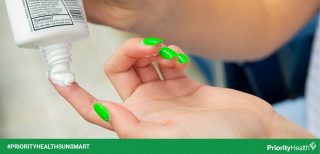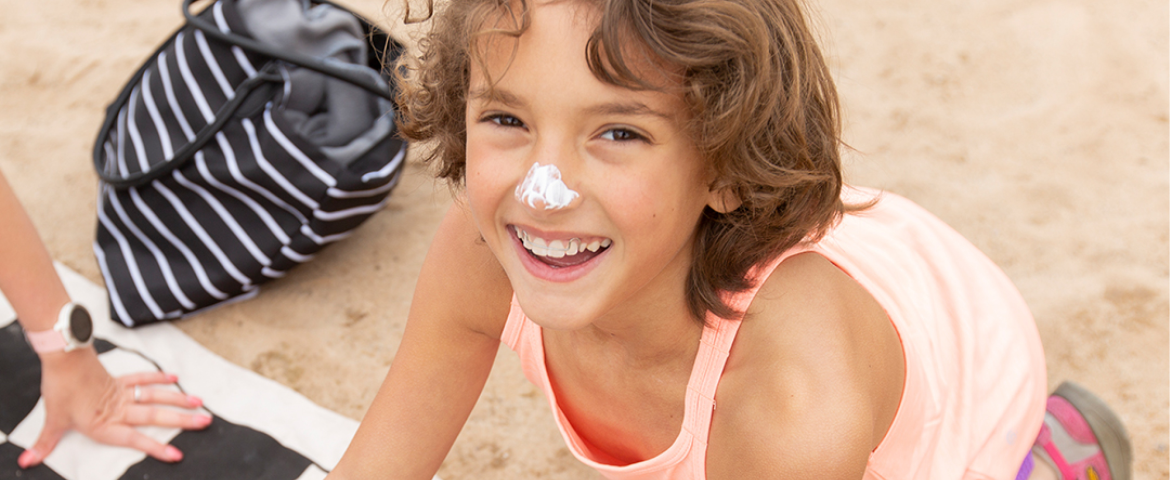Just because the number of summer days are decreasing, that doesn’t mean your risk of skin cancer is. It’s important be proactive when protecting yourself from the sun’s harmful rays, but what do you do if you mistakenly let your sun protection routine fall short? Follow these tips to help replenish and repair your sunburned skin.
Cool off.
The first thing you should do after hours in the sun is find a way to cool off your body. Try going indoors, sitting in the shade, taking a cool shower or simply placing a cool washcloth on quick-cooling spots such as your forehead, feet or back of your neck. If you’ve been sunburned, you can apply the cool washcloth directly to the affected area or apply a layer of aloe vera gel for relief.
Re-hydrate.
Spending extended periods of time in the sun can dehydrate your body. Taking a cool shower and applying aloe vera, which is 99% water, help to re-hydrate your skin. However, the most important way to hydrate is to drink plenty of water. Experts recommend drinking about 2.7 liters of water for women and 3.7 liters for men per day. However, prolonged physical activity and heat exposure will increase water losses and raises daily fluid needs.
Moisturize.
Exposure to the sun and other summertime aggressors, such as chlorine if you’re lounging poolside, can be very drying for the skin. After taking a cool shower, apply a moisturizing cream that contains aloe vera and soy when your skin is still damp to help lock in the moisture. Using a cream with vitamins C and E can also help limit skin cell damage. Do not apply butter, petroleum jelly or other oil-based products as they can block pores and keep heat or sweat from escaping. Try to avoid products containing benzocaine or lidocaine as well, as these ingredients can make skin irritation worse.

Prevent irritation.
While your skin is healing, be extra cautious about protecting it from further damage and irritation. Wear loose-fitting clothing to prevent rubbing or chaffing of the skin. If you have blisters from sunburn, consider placing dry bandages on them to lower the risk of infection. Picking, scratching or peeling away blisters can also increase the chance of infection. Using an over-the-counter hydrocortisone cream can reduce skin inflammation and relieve itching while your skin is healing. Over-the-counter pain medication, such as acetaminophen or ibuprofen, also eases discomfort.
Don’t repeat your mistakes.
If you get burned, take steps to prevent it from happening again the next time you’re in the sun. Getting sunburned once can have negative consequences, but it’s not as dangerous as getting burned multiple times. In fact, every time your skin color changes after sun exposure, your risk of developing a sun-related ailment increases. Wear clothing made from tightly-woven fabric over sunburned skin when you’re outside, as well as hats, sunglasses and other protective garments. You should apply sunscreen with a SPF of at least 30 about every two hours—and try to stay out of the sun between 10 a.m. and 2 p.m. when the sun’s rays are at their strongest.
Don’t let the sun win. Even if you’re sunburned, there are smart ways to care for your skin and prevent further damage. Make sure to keep these tips, as well as these prevention methods, in mind the next time you spend an entire day (or weekend) in the sun.


